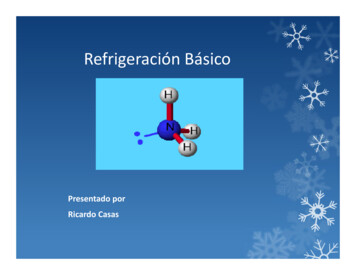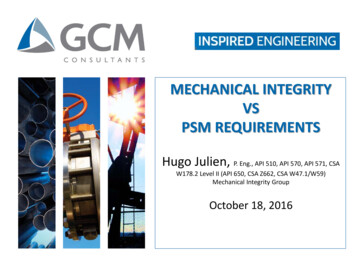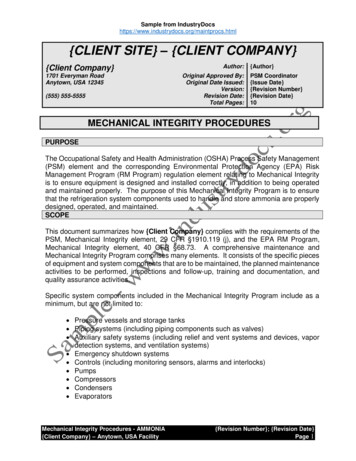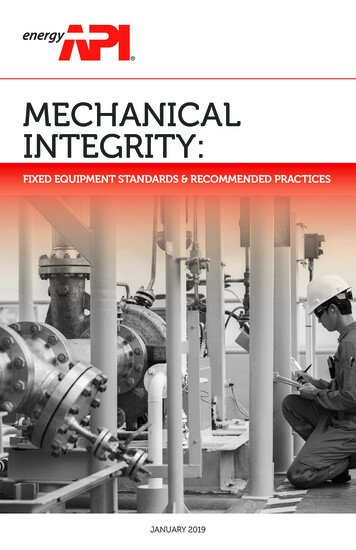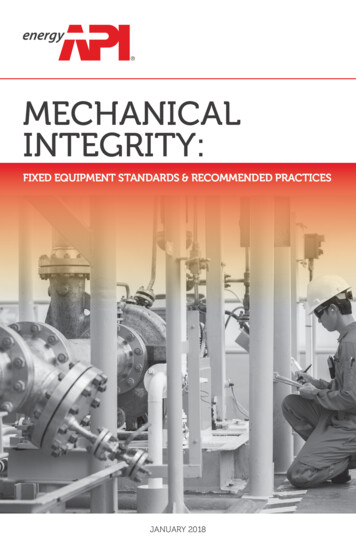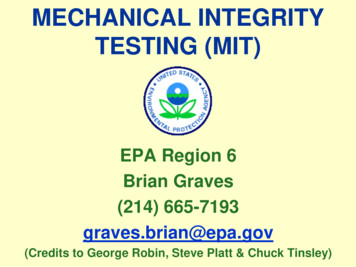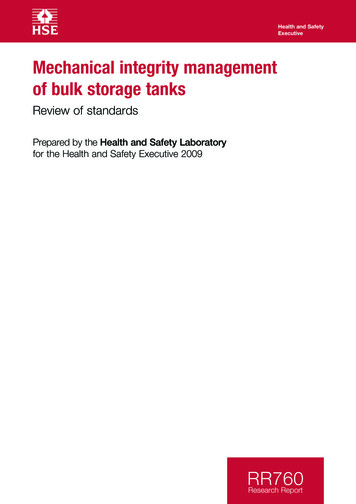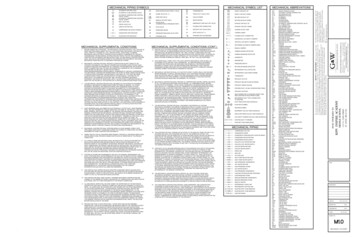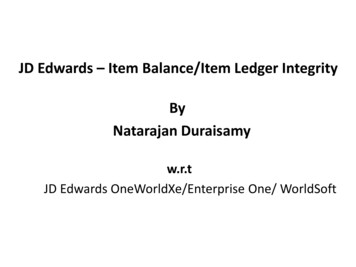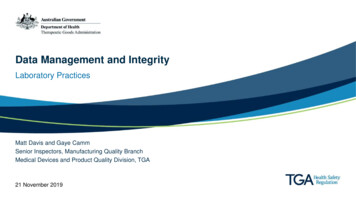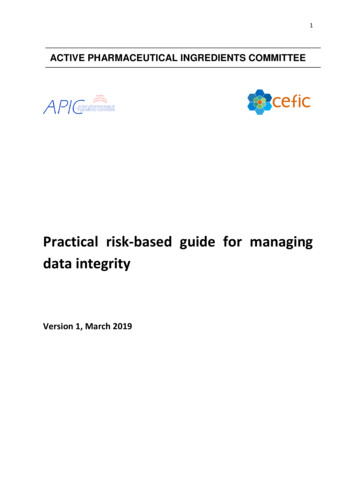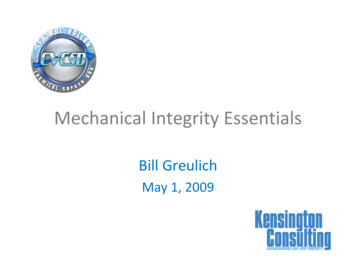
Transcription
Mechanical Integrity EssentialsBill GreulichMay 1, 2009
Safety Moment
Regulations Federal Risk Management Programs (RMP) forChemical Accident Prevention Program, 40 CFR68.73. California Accidental Release PreventionProgram (CalARP), 19 CCR 2760.5. California Process Safety Management (PSM) ofAcutely Hazardous Materials, 8 CCR 5189(j).
Definition“Mechanical Integrity means the process ofensuring that process equipment isfabricated from the proper materials ofconstruction and is properly installed,maintained, and replaced to prevent failuresand accidental releases.”19 CCR 2735.3
Basic ConceptYou design, build and install a process inaccordance with your:– Process Safety Information (PSI),– Operating Procedures (SOP’s), and,– Process Hazard Analysis (PHA).Your Mechanical Integrity program ensures itcontinues to perform in the way you initiallyintended it to.
Application Pressure vessels and storage tanks; Piping systems (including piping componentssuch as valves); Relief and vent systems and devices; Emergency shutdown systems; Controls (including monitoring devices andsensors, alarms, and interlocks); and, Pumps.19 CCR 2760.5 (a)
Program Components Written procedures.Training for maintenance activities.Inspection and testing.Equipment deficiencies.Quality assurance.19 CCR 2760.5 (b)‐(f)
Written Procedures(A) The employer shall establish and implement written proceduresto maintain the ongoing integrity of process equipment andappurtenances. These procedures shall include a method:1) for allowing employees to identify and report potentiallyfaulty or unsafe equipment; and2) to record their observations and suggestions in writing.(B) The employer shall respond regarding the disposition of theemployee's concerns contained in the report(s) in a timelymanner.(C) The employer shall provide employees and their representativesaccess to the information required in this subsection.8 CCR 5189 (j)(1)
Inspection and Testing(A) Inspections and tests shall be performed on process equipment.(B) Inspection and testing procedures shall follow recognized andgenerally accepted good engineering practices.(C) The frequency of inspections and tests shall be consistent withapplicable manufacturer's recommendations and goodengineering practices and more frequently if determinednecessary as dictated by operating history.(D) The employer shall have a certification record that eachinspection and test has been performed in accordance with thissubsection. The certification shall identify the date of theinspection; the name of the person who performed theinspection and test; and the serial number or other identifier ofthe equipment (also: a description of the test and the results).8 CCR 5189 (j)(2)
Equipment DeficienciesThe employer shall correct deficiencies inequipment which are outside acceptablelimits defined by the process safetyinformation before further use, or in a safeand timely manner provided means are takento assure safe operation.8 CCR 5189 (j)(3)
Quality Assurance(A) The employer shall assure that in the construction ofnew plants and equipment modified, repaired, orfabricated equipment is suitable for the processapplication for which they will be used.(B) Appropriate checks and inspections shall beperformed as necessary to assure that equipment isinstalled properly and is consistent with designspecifications and manufacturer's instructions.(C) The employer shall assure that maintenancematerials, spare parts and equipment, meet designspecifications and applicable codes.8 CCR 5189 (j)(4)
SummaryMI ensures what you said your process wasduring design, fabrication, and installationstill is!– MI is more than a “maintenanceprogram”.– MI requires documented inspection andtesting.– MI does not tolerate indiscriminate “runto failure”.– MI ties to PSI, PHA, SOP, PSSR, and MOCrequirements.
“Mechanical Integrity means the process of ensuring that process equipment is fabricated from the proper materials of construction and is properly installed, maintained, and replaced to prevent failures and accidental releases.” 19 CCR 2735.3File Size: 348KBPage Count: 12
